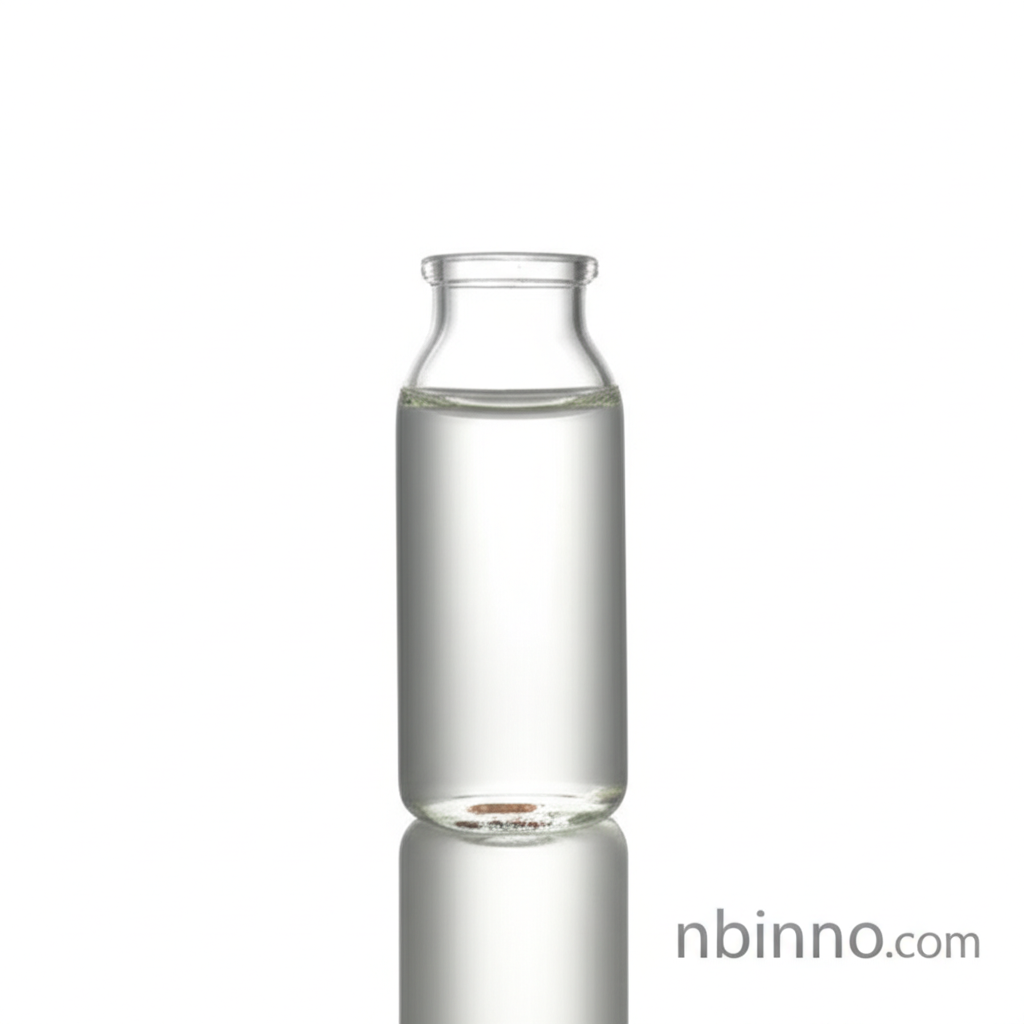Diisopropylcarbodiimide (DIC): A Versatile Dehydrating Agent in Organic Synthesis and Peptide Coupling
Unlock efficient synthesis with Diisopropylcarbodiimide – your key to advanced organic chemistry and peptide coupling.
Get a Quote & SampleProduct Core Value

Diisopropylcarbodiimide
Diisopropylcarbodiimide (DIC) is a pivotal organic synthesis reagent, celebrated for its efficacy as a dehydrating agent and coupling agent. Its convenient liquid form at room temperature offers a significant handling advantage over solid carbodiimides, facilitating smoother laboratory operations. DIC plays a crucial role in various chemical transformations, from the intricate construction of peptides to the synthesis of essential intermediates like acid anhydrides, aldehydes, ketones, and isocyanates.
- Explore the versatile uses of Diisopropylcarbodiimide in peptide synthesis, enabling efficient amide bond formation with high yields and purity.
- Leverage Diisopropylcarbodiimide as a powerful dehydrating agent in diverse organic synthesis pathways, driving reactions forward effectively.
- Understand the benefits of using DIC as a coupling reagent for amide formation, a cornerstone of pharmaceutical and material science applications.
- Discover how to achieve the synthesis of acid anhydrides with DIC, a critical step in producing many fine chemicals.
Key Advantages Offered
Ease of Handling
As a liquid at room temperature, Diisopropylcarbodiimide simplifies handling and storage compared to solid counterparts, contributing to safer and more efficient laboratory practices, a key aspect of efficient organic synthesis reagents.
Efficient By-product Removal
The by-product of DIC reactions, diisopropylurea, is soluble in common organic solvents. This characteristic significantly aids in post-reaction purification processes, making it easier to isolate the desired products, which is crucial for pharmaceutical synthesis.
Broad Reaction Scope
Diisopropylcarbodiimide is a versatile reagent, effectively employed in peptide synthesis and various esterification and condensation reactions, showcasing its utility in diverse chemical transformations.
Key Applications
Peptide Synthesis
DIC is a premier choice as a coupling agent in peptide synthesis, facilitating the formation of peptide bonds with minimal racemization when used with additives, a critical factor for producing high-quality peptides.
Esterification Reactions
The reagent efficiently converts carboxylic acids and alcohols into esters, a fundamental transformation widely applied in the synthesis of flavorings, fragrances, and pharmaceuticals.
Organic Synthesis Intermediate
It serves as a key intermediate for the synthesis of various organic compounds including acid anhydrides, aldehydes, ketones, and isocyanates, underscoring its importance in fine chemical production.
Pharmaceutical & Biological Preparations
DIC is extensively used in the medical, health products, cosmetics, and biological preparations industries due to its role in synthesizing complex molecules like amikacin and glutathione.
